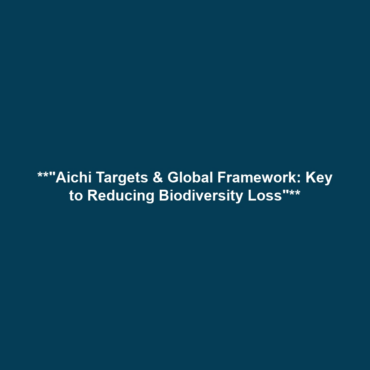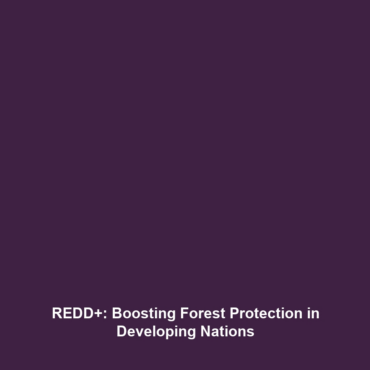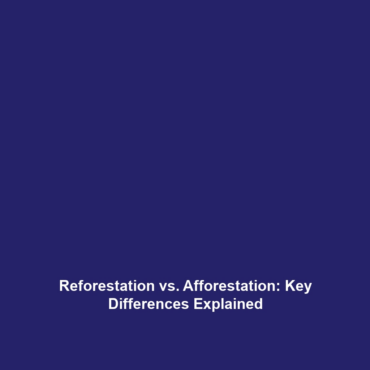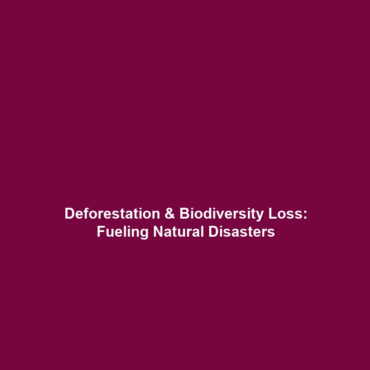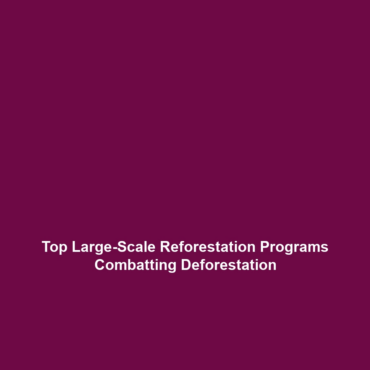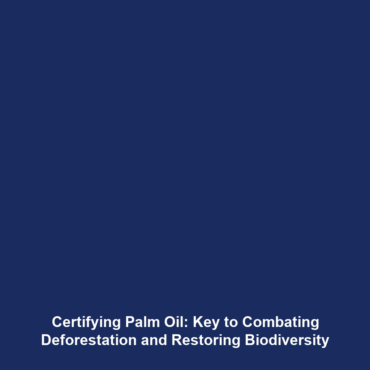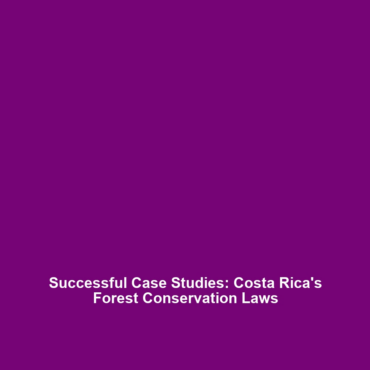The Role of the Aichi Biodiversity Targets and the Global Biodiversity Framework in Setting Goals for Reducing Biodiversity Loss
Category: Deforestation & Biodiversity Loss
Introduction
The Aichi Biodiversity Targets and the Global Biodiversity Framework play a crucial role in addressing biodiversity loss, particularly in the context of deforestation and habitat degradation. These international frameworks set ambitious yet achievable goals aimed at conserving biological diversity and ensuring the sustainable use of natural resources. By shaping policies and strategies globally, they emerge as pivotal tools in combating the alarming rates of biodiversity loss caused by deforestation and environmental changes. Understanding their significance is crucial for preserving ecosystems and promoting sustainable development.
Key Concepts
The Aichi Biodiversity Targets, established in 2010 during the Convention on Biological Diversity (CBD) Conference, outline 20 strategic targets to halt biodiversity loss by 2020. Similarly, the Global Biodiversity Framework builds upon these targets, focusing on long-term goals for sustainable biodiversity management) through 2030 and beyond. Key concepts include:
- Conservation Goals: Targeting protected areas and restoring ecosystems to enhance biodiversity.
- Access and Benefit-sharing: Ensuring equitable access to genetic resources and sharing the benefits derived from them.
- Awareness and Support: Promoting education about biodiversity among communities globally, particularly those affected by deforestation.
Applications and Real-World Uses
The role of the Aichi Biodiversity Targets and the Global Biodiversity Framework has significant real-world applications in the context of deforestation and biodiversity loss:
- National Policies: Countries use these frameworks to create national biodiversity strategies that align with global goals.
- Conservation Initiatives: These frameworks guide conservation projects that aim to restore degraded ecosystems.
- Corporate Responsibility: Companies adopt sustainability practices that comply with biodiversity targets to mitigate their environmental impact.
Current Challenges
Despite their importance, there are several challenges associated with implementing the Aichi Biodiversity Targets and the Global Biodiversity Framework in tackling deforestation and biodiversity loss:
- Funding Limitations: Many countries struggle to secure adequate funding for biodiversity initiatives.
- Political Will: Inconsistent political commitment can hinder the enforcement of biodiversity policies.
- Data Gaps: Lack of reliable data on biodiversity makes it difficult to monitor progress effectively.
Future Research and Innovations
Future research and innovations are essential for enhancing the effectiveness of the Aichi Biodiversity Targets and the Global Biodiversity Framework. Key areas to explore include:
- Next-Generation Technologies: Utilizing remote sensing and AI to monitor biodiversity and deforestation in real-time.
- Innovative Conservation Strategies: Developing new methods for habitat restoration and species recovery.
- Community Engagement: Researching effective ways to involve local communities in biodiversity conservation efforts.
Conclusion
The Aichi Biodiversity Targets and the Global Biodiversity Framework are instrumental in shaping global efforts to reduce biodiversity loss, especially in relation to deforestation. By setting clear objectives and promoting cooperation, these frameworks highlight the urgency of conserving our planet’s biological diversity. It is essential for governments, organizations, and individuals to support these initiatives to foster a sustainable future. For more information on biodiversity conservation strategies, check out our articles on conservation strategies and the impact of deforestation.
